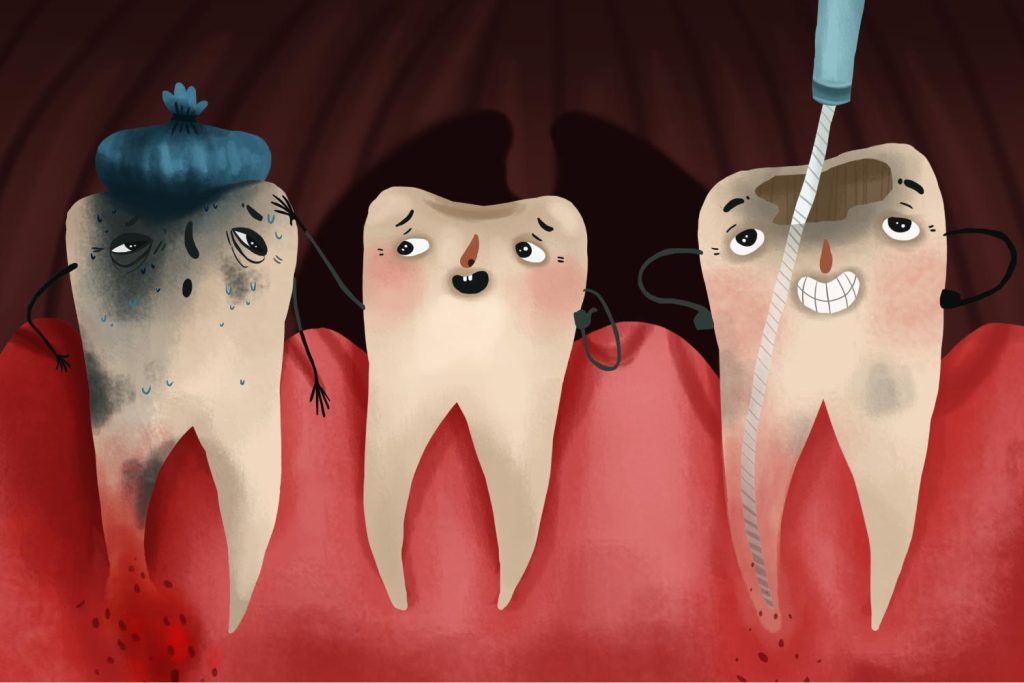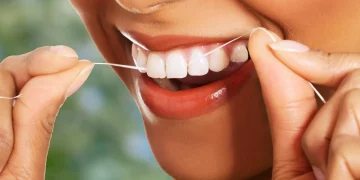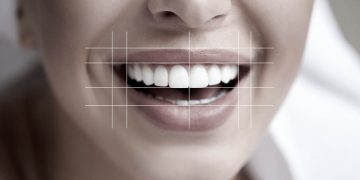Introduction
Gum disease, also known as periodontal disease, is a serious yet common condition that affects the gums and the structures supporting your teeth. If left untreated, it can lead to tooth loss and other severe health complications. Unfortunately, gum disease often progresses without noticeable symptoms in its early stages, which is why it’s essential to be proactive about gum health.
In this article, we’ll explore the warning signs of gum disease, how it develops, and most importantly, how you can protect your gums to maintain a healthy smile for life.
1. What Are the Early Warning Signs of Gum Disease?
1.1. Red, Swollen, or Bleeding Gums
One of the earliest and most noticeable signs of gum disease is red, swollen, or bleeding gums, especially when brushing or flossing. Healthy gums should be firm, pink, and fit snugly around the teeth. When gums become inflamed or irritated due to plaque buildup, they may bleed or appear swollen.
- What to Look For: Gums that bleed when you brush or floss, or that appear redder and puffier than normal.
- When to Act: If you notice any bleeding or swelling, it’s a sign of gingivitis, the early stage of gum disease. It’s important to address this early to prevent it from progressing into more serious forms of gum disease.
1.2. Persistent Bad Breath (Halitosis)
Chronic bad breath, or halitosis, can be a major red flag for gum disease. As bacteria build up in the pockets between the gums and teeth, they can produce foul-smelling sulfur compounds that contribute to bad breath.
- What to Look For: A persistent bad taste in your mouth or bad breath that doesn’t go away after brushing.
- When to Act: If your bad breath persists despite practicing good oral hygiene, it could be a sign of gum disease or an infection in the gums. Consult your dentist for an evaluation.
1.3. Receding Gums
Gum recession occurs when the gum tissue pulls away from the tooth, causing the tooth to appear longer. This is a common symptom of gum disease, as the bacteria that cause inflammation can lead to the destruction of gum tissue.
- What to Look For: Teeth appearing longer than usual or a visible gap between your gums and teeth.
- When to Act: If you notice any recession, you should see your dentist promptly. Left untreated, receding gums can expose the tooth roots, leading to tooth sensitivity and other complications.
1.4. Loose or Shifting Teeth
As gum disease progresses, the structures that support your teeth become weakened. This can result in loose or shifting teeth. If you notice that your teeth feel loose or if they seem to be moving out of place, it could be a sign of advanced gum disease.
- What to Look For: Teeth that feel loose, or a change in the way your teeth fit together when you bite down.
- When to Act: If you notice that your teeth are shifting or feel loose, seek professional dental care immediately. Advanced gum disease can lead to tooth loss if not treated promptly.
1.5. Pus Between Teeth and Gums
If your gums become infected due to untreated gum disease, they may produce pus, which is a clear sign of an active infection. This typically occurs in more advanced stages of periodontal disease.
- What to Look For: The presence of pus between your gums and teeth, or a foul-tasting discharge.
- When to Act: If you notice pus or experience pain and discomfort when touching your gums, you should see your dentist immediately. This may indicate an abscess or severe infection.
1.6. Pain When Chewing or Biting
While gum disease often starts without pain, as it progresses, it can cause discomfort when chewing or biting down. This may occur due to inflammation of the gums or the destruction of the supporting tissues around the tooth.
- What to Look For: Pain or discomfort when chewing, particularly in specific areas of your mouth.
- When to Act: If you experience pain while chewing, especially with no clear cause, consult your dentist as soon as possible. This could indicate advanced gum disease or tooth problems.
2. How Does Gum Disease Develop?
Gum disease typically develops in stages, starting with gingivitis and potentially progressing to periodontitis if not treated early. Understanding the stages of gum disease can help you recognize it sooner and seek timely treatment.
2.1. Gingivitis: The Early Stage of Gum Disease
Gingivitis is the mildest form of gum disease, characterized by inflammation of the gums caused by plaque buildup. At this stage, the disease is usually reversible with proper oral care. Gingivitis can often go unnoticed because it doesn’t cause pain, but the gums may appear red and swollen and bleed when brushed.
- What to Look For: Mild redness, swelling, or bleeding gums when brushing or flossing.
- Prevention and Treatment: Regular brushing, flossing, and professional cleanings are the key to reversing gingivitis. If caught early, gingivitis can be completely reversed.
2.2. Periodontitis: Advanced Gum Disease
If gingivitis is left untreated, it can progress into periodontitis, a more severe form of gum disease. In this stage, the infection spreads deeper into the tissues supporting the teeth. The gums begin to pull away from the teeth, forming pockets where bacteria can grow. This can lead to further destruction of the tooth’s supporting bone structure.
- What to Look For: Gums that recede from the teeth, pockets of infection, loose teeth, or pus.
- Treatment: Treatment typically involves deep cleaning procedures, such as scaling and root planing, and possibly antibiotics. In some cases, surgical interventions may be necessary to restore gum health.
2.3. Advanced Periodontitis
In the final stage of periodontitis, the damage to the gums and supporting structures is severe. The teeth may become loose, and there may be significant bone loss. This can lead to tooth loss if not treated promptly.
- What to Look For: Loose or shifting teeth, extreme gum recession, and severe infection.
- Treatment: Treatment may involve more advanced procedures such as flap surgery or bone grafting, and in severe cases, tooth extraction may be necessary.
3. How to Protect Your Gum Health?
Prevention is key to maintaining healthy gums. By adopting healthy habits and incorporating a few simple steps into your routine, you can significantly reduce your risk of gum disease.
3.1. Brush Your Teeth Twice a Day
Brushing your teeth with fluoride toothpaste at least twice a day is essential for removing plaque buildup on your teeth and gums. Plaque is the primary cause of gum disease, so thorough brushing helps keep it under control.
- Tip: Use a soft-bristled toothbrush to avoid damaging your gums, and replace your toothbrush every 3 to 4 months.
3.2. Floss Daily
Flossing removes plaque and food particles between your teeth and along the gumline, where your toothbrush may not reach. This is especially important for preventing gum disease and cavities.
- Tip: Use proper flossing technique and consider floss picks or water flossers if traditional flossing is difficult.

3.3. Use Antimicrobial Mouthwash
Using a mouthwash with antibacterial properties can help reduce plaque and bacteria in your mouth, which is essential for preventing gum disease. Mouthwash can reach areas that brushing and flossing may miss, providing an added layer of protection.
- Tip: Choose a mouthwash that’s alcohol-free and contains fluoride to promote overall oral health.
3.4. Avoid Smoking and Tobacco Use
Smoking and using tobacco products significantly increase the risk of gum disease. Tobacco weakens your immune system, making it harder for your body to fight infections, including those in your gums.
- Tip: If you smoke, consider quitting to improve both your oral and overall health. Your dentist can offer resources to help you quit.
3.5. Eat a Balanced Diet
A healthy diet plays a vital role in maintaining healthy gums. Nutrients like vitamin C, which helps support gum tissue, and calcium, which strengthens teeth, can help protect against gum disease.
- Tip: Eat a diet rich in fruits, vegetables, whole grains, and lean proteins. Limit sugary snacks and drinks, which can contribute to plaque buildup.
3.6. Regular Dental Check-Ups and Cleanings
Regular dental visits are crucial for detecting early signs of gum disease before it becomes serious. Your dentist can clean your teeth professionally, removing plaque and tartar buildup that can lead to gum disease. Routine exams also help catch other oral health problems early.
- Tip: Schedule a dental check-up every six months or as recommended by your dentist.
4. Treatment Options for Gum Disease
If you’ve noticed any signs of gum disease, it’s important to visit your dentist for an evaluation. Depending on the stage of the disease, treatment options may include:
4.1. Professional Cleaning (Scaling and Root Planing)
In the early stages of gum disease, a deep cleaning known as scaling and root planing can help remove plaque and tartar from below the gumline and smooth the root surfaces, allowing the gums to reattach to the teeth.
4.2. Antibiotics or Antimicrobial Treatments
In some cases, your dentist may prescribe antibiotics or antimicrobial treatments to help control bacterial infections in the gums.
4.3. Gum Surgery
For more advanced cases of gum disease, surgical options such as flap surgery or bone grafting may be necessary to repair and regenerate damaged tissues and bones around the teeth.
4.4. Tooth Extraction
In severe cases of gum disease, when teeth become loose and cannot be saved, tooth extraction may be necessary. Replacements such as dental implants can restore both the function and aesthetics of your smile.
Conclusion
Gum disease is a serious condition that can affect both your oral health and overall well-being. Recognizing the warning signs of gum disease—such as bleeding gums, bad breath, and tooth sensitivity—can help you seek treatment early and prevent more severe issues. By practicing good oral hygiene, making healthy lifestyle choices, and visiting your dentist regularly, you can protect your gums and maintain a beautiful, healthy smile for life.
Remember, your gums are essential for overall oral health, so don’t overlook them!













































Discussion about this post